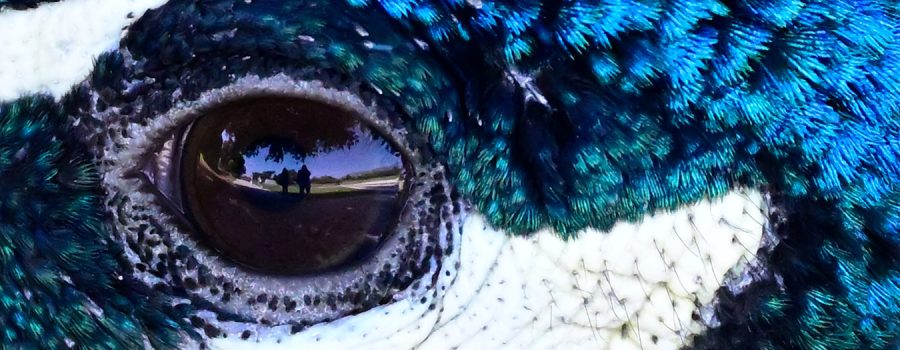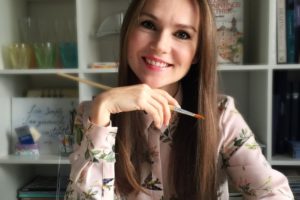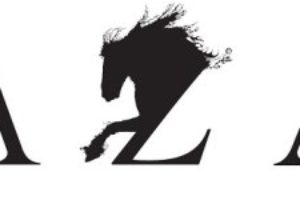Examine and Embrace: The Photography of Heather C. Morrow
By Catie Jarvis
“Metamorphosis One” — Allesandra Celletti
 Through the eye of a peacock, the pistil of a flower, and light in motion — artist Heather C. Morrow uses the lens of her camera to creatively see the world. As a child in the 70’s, Morrow lived in Japan with her family and used a small Kodak film camera to imitate her father who was taking photos of the incredible landmarks and cultural events. Young Heather was interested in the new perspectives that could be gained from isolating one object and looking closely. Her father set up a darkroom in their home where Morrow could watch the images magically rise to life, revealing the unique pieces that make up the world. Throughout her childhood, Morrow dabbled in theater, painting, and all sorts of other artistic endeavors. She recalls her mother saying, “Heather is bored of it again.” But that wasn’t exactly right. Ultimately, Morrow wanted to continuously learn and grow. In this fashion, Heather’s work has evolved alongside the massive evolution that photography has undergone, combining technology with the creative, and always embracing change.
Through the eye of a peacock, the pistil of a flower, and light in motion — artist Heather C. Morrow uses the lens of her camera to creatively see the world. As a child in the 70’s, Morrow lived in Japan with her family and used a small Kodak film camera to imitate her father who was taking photos of the incredible landmarks and cultural events. Young Heather was interested in the new perspectives that could be gained from isolating one object and looking closely. Her father set up a darkroom in their home where Morrow could watch the images magically rise to life, revealing the unique pieces that make up the world. Throughout her childhood, Morrow dabbled in theater, painting, and all sorts of other artistic endeavors. She recalls her mother saying, “Heather is bored of it again.” But that wasn’t exactly right. Ultimately, Morrow wanted to continuously learn and grow. In this fashion, Heather’s work has evolved alongside the massive evolution that photography has undergone, combining technology with the creative, and always embracing change.
North Star Trail Over Joshua Tree
All Photos © Heather Campbell Morrow
The photo above was crafted after cleaning up all of the satellites and planes from over 600 photos taken to create this North Star Trail over Joshua Tree.
 Fascination with the marriage between technology and photography has provided much of Morrow’s inspiration. While some artists shy away from change, threatened by the ways that technology alters and even usurps art, Morrow is not someone who thinks that things should or could go backward. Her innovative mind embraces the new. When I asked Morrow how she thinks the iPhone changed the scope of photography, she generously and enthusiastically replied, “As a human race we’re very visual, [the iPhone] is another way to visually communicate.” She is grateful for the advancements, giving more people creative visual power, and allowing her to focus on the world with more clarity, depth, and vivid detail. Whether photographing a butterfly in flight or a Ferris Wheel at night, Morrow’s artistry lies within the vision she chooses to expose and the innovation with which she can capture it.
Fascination with the marriage between technology and photography has provided much of Morrow’s inspiration. While some artists shy away from change, threatened by the ways that technology alters and even usurps art, Morrow is not someone who thinks that things should or could go backward. Her innovative mind embraces the new. When I asked Morrow how she thinks the iPhone changed the scope of photography, she generously and enthusiastically replied, “As a human race we’re very visual, [the iPhone] is another way to visually communicate.” She is grateful for the advancements, giving more people creative visual power, and allowing her to focus on the world with more clarity, depth, and vivid detail. Whether photographing a butterfly in flight or a Ferris Wheel at night, Morrow’s artistry lies within the vision she chooses to expose and the innovation with which she can capture it.
 Morrow is obsessed with experimenting with different cameras and learning new techniques to expand her craft. She began classes in Light Painting, to explore the art. Morrow explains to me that the ability to capture light is something that is transformed by technology. Because the camera shows you real-time, it makes it easier to capture light. Something like star trails, she explains, couldn’t be done before digital photography. What Morrow has created with her Light Painting is enthralling and inspiring. Swirling light behind a model, done completely in the dark. Flaming electric blue and orange circles and goddesses breathing fire. She wrote “LOVE” backward in light, utilizing a specific flashlight, a certain lumen of light, and stopping action with the flash.
Morrow is obsessed with experimenting with different cameras and learning new techniques to expand her craft. She began classes in Light Painting, to explore the art. Morrow explains to me that the ability to capture light is something that is transformed by technology. Because the camera shows you real-time, it makes it easier to capture light. Something like star trails, she explains, couldn’t be done before digital photography. What Morrow has created with her Light Painting is enthralling and inspiring. Swirling light behind a model, done completely in the dark. Flaming electric blue and orange circles and goddesses breathing fire. She wrote “LOVE” backward in light, utilizing a specific flashlight, a certain lumen of light, and stopping action with the flash.

Light Photography — © Heather Campbell Morrow — Model Nina Keller
Morrow has also explored the artistry of infrared photography, learning from the visually creative Piper Mackay, who has specialized in capturing the animals, people, and lands of Africa for over a decade. The infrared camera is converted to drop some of the light, allowing us to see light that we can’t normally view with our human eye. Light on the edge of the red spectrum, different frequencies, on the edge of visible light. If the sky is grey, she explains, the infrared camera can see the light behind the clouds. The camera allows you to photograph outside at times of day, like high noon, which would normally not be ideal, serving as an innovative way to read light differently. “There’s so much to know about these cameras,” Morrow says, “I learn something every day.” [Click the following images for larger photos.]
Recently, Morrow has embarked on year-long projects. She picks out something that her lens can get close to —a face, an animal, a plant— and spends a year intimately examining and photographing it. She says that the longer the duration and the more closely she looks, the more refined her perspectives and angles become. The more extensive, the greater her experimentation, lenses and ideas.
 Her first year-long project, “Little Pricks” explored cacti through her camera’s lens. She traveled all over southern California, to cacti shows, and repeated visits to South Coast Botanical, Huntington Gardens, and Joshua Tree, and admits that she will never look at cacti the same way again. Neither, I think, will those who view her unique and intimate photographs in this collection. Her current year-long project is inspired by Georgia O’Keeffe’s biography and the artist’s affinity for painting the same subject many times. Morrow calls this series “’Just Flowers’ Georgia O’Keeffe Re-imagined”1, and she sends her lens tight into the crevices of flowers.
Her first year-long project, “Little Pricks” explored cacti through her camera’s lens. She traveled all over southern California, to cacti shows, and repeated visits to South Coast Botanical, Huntington Gardens, and Joshua Tree, and admits that she will never look at cacti the same way again. Neither, I think, will those who view her unique and intimate photographs in this collection. Her current year-long project is inspired by Georgia O’Keeffe’s biography and the artist’s affinity for painting the same subject many times. Morrow calls this series “’Just Flowers’ Georgia O’Keeffe Re-imagined”1, and she sends her lens tight into the crevices of flowers.

Photo: Parrot Eye – © Heather Campbell Morrow
The photographs she takes, so sharp and unique, seem to isolate and embody the beauty of nature. She says that finding new techniques to take and retake, examine, and reexamine one thing like a flower, truly allows her to grow as an artist.
Heather Morrow looks forward to all the learning she has left to do, and how technology will continue to open new doors of exploration. While her vision is always opening, expanding, and taking in, she also acknowledges the continued influences of her past. Much of her work has an Asian feel, inspired by her childhood in Japan and the Japanese art that her parents collected throughout their lives. She recently found a box of film that her father shot alongside her in Japan all those years ago and has sent the negatives off. She is excited to see this flash of the past, as much as she awaits the new approaches and innovations that the future will hold for artists to utilize. I believe that Heather Morrow’s art can teach us all a great deal about embracing change, continuously learning, and ceaselessly examining the beauty and wonders of the world around us.

1 “Just Flowers” is an intimate look at the intricate structures, delicacy and beauty of the flower’s form inspired by Georgia O’Keeffe’s characteristic style. Subtle variations in tone and texture create a sense of depth and movement. The compositions are both bold and delicate, capturing the essence of the flower in all its beauty and complexity.
Heather C. Morrow — Website
@ascapturedbyheather — Instagram



















